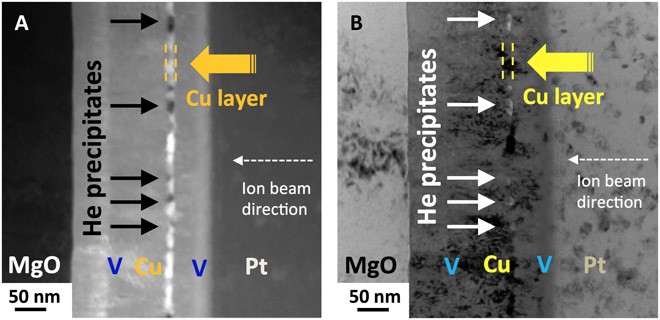
By Brian Santo, contributing writer
For a so-called “noble” gas, helium has been one of the biggest impediments to making fusion power practical. Helium has corrupted every type of material ever used to make reactor chambers — or had until the recent discovery of nanocomposites that are still subject to helium corrosion, but which seem to channel the damage well enough that fusion power might be one major step closer to becoming a practical energy option.
Stars are essentially fusion reactors. Inside stars, pairs of protons slam together and fuse to become deuterium (one of two forms of hydrogen). When they fuse, they emit a positron and a neutrino. Positrons encounter electrons, and the two annihilate each other, producing gamma rays that are the ultimate source of sunlight. Meanwhile, stray protons collide with deuterium atoms, forming helium (He).
Helium, like other noble gases, is colorless, odorless, and inert; it is not toxic, nor is it a greenhouse gas. That would ordinarily make it a completely harmless byproduct. But helium is also incredibly light, and because of that, it tends to insinuate itself into and through most other materials. That’s of no consequence whatsoever in stars, but it’s a significant problem when scientists are producing fusion inside reactors.
In fusion reactors, helium bubbles weasel their way into the containment walls, accumulating into bubbles that end up percolating out of the material, ultimately creating blisters on the outside walls and generally undermining the structural integrity of the material. The researchers described the effect in nuclear fusion systems as “devastating.”
Researchers at Los Alamos National Laboratory tried different processing techniques, trying to find some combination of materials that might be somehow impervious to helium corrosion. Based on the responses of different materials in previous experiments, the researchers decided to try a vanadium-copper-vanadium sandwich of nanolayers. They had some expectations of what might happen but were surprised by the result.
“Rather than expanding continuously while remaining equiaxed, [helium] precipitates confined within nanolayers spontaneously coalescence into elongated, He-filled channels,” the researchers report in their paper. (By the way, we have to admit that we had to look up “equiaxed.” It means having approximately equal dimensions in all directions. You’re welcome.)
It turns out that the helium naturally drilled structured channels that ultimately became vents. The corrosion, as such, still occurred but in an unexpectedly controlled fashion that forestalls further corrosion. It’s a new class of helium precipitates, the researchers proudly announced.
The behavior, the researchers explained, “is due to both the confinement of the precipitates within the metal layer and the nonuniform, location-dependent distribution of interface energies on the heterophase interfaces that bound the layer.”
As a practical matter, it suggests that it might be possible to finally build fusion power generators that don’t rapidly decompose.
You knew that helium is the only liquid that cannot be solidified simply by dropping the temperature, right?
Image courtesy of Los Alamos National Laboratory
Advertisement
Learn more about Electronic Products Magazine





